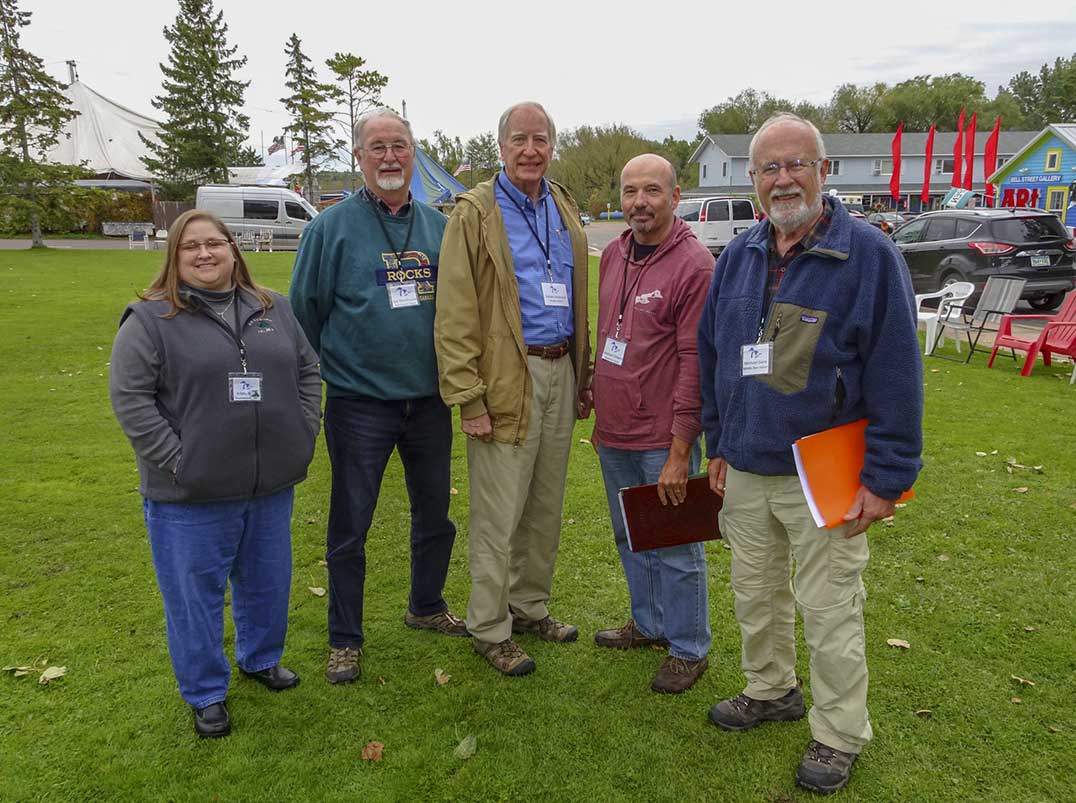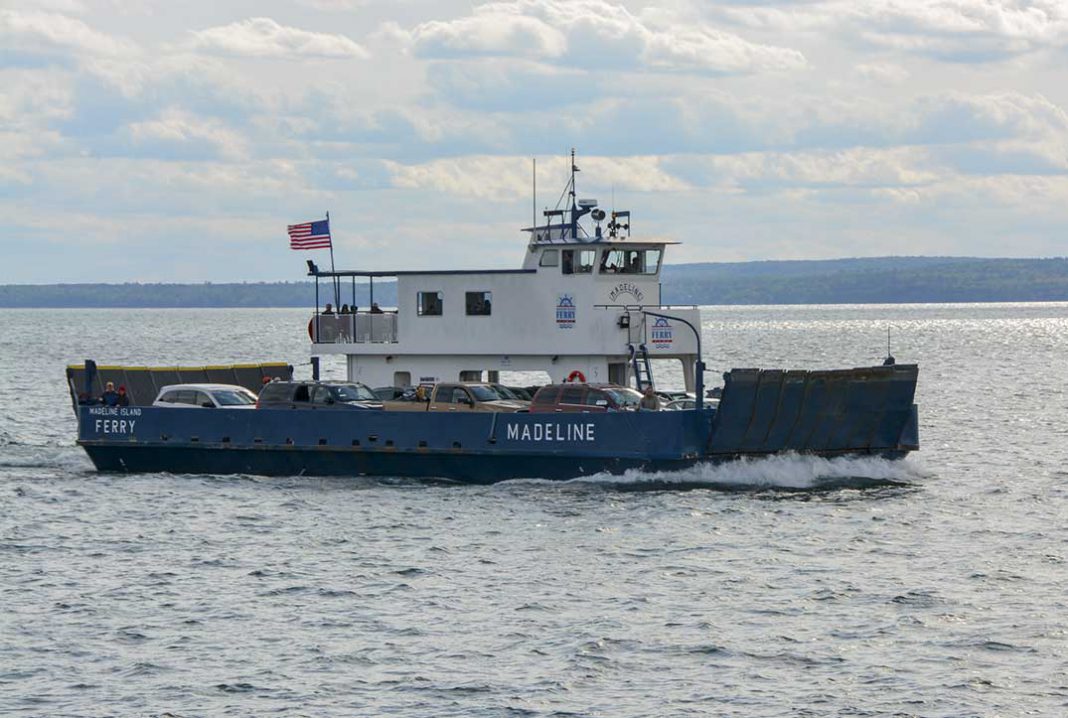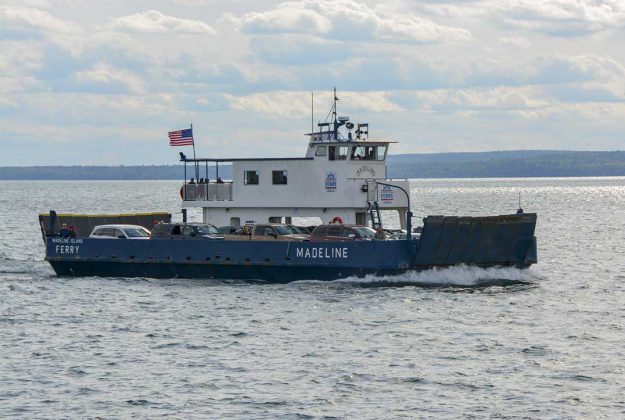by Joe Shorthouse
MADELINE ISLAND, WI—Natural beauty, abundant resources and water-based industries have attracted people for centuries to a life near the shorelines of the five Great Lakes. Some people have taken this urge a step further and chosen to live on islands in the Great Lakes. That is, they live on land masses that are completely surrounded by water and geographically separated from the mainland. This is the case with Manitoulin Island which has a rich history of at least 10,000 years of people exploring and living here.
Manitoulin is one of approximately 32,000 islands in the Great Lakes, the largest and most diverse collection of freshwater islands in the world. Although most are uninhabited, about 30 islands have a diverse mix of permanent residents, summer cottagers, and transient visitors.
As all permanent and summer residents of Manitoulin are aware, there is something special about the way of life, atmosphere, and the people who live here and the same is felt by the residents of other islands. These communities are culturally, socially, and ecologically rich and have deep connections to place and the natural world.
Although all island communities in the Great Lakes are distinct from one another in character and geography, they have in common many challenges to ‘island living’ including sustainable economic development, unemployment, aging populations, deteriorating infrastructure, invasive species, damaged and polluted ecosystems, changing water levels, safe drinking water, sewage treatment, and the preservation of history.
A new partnership called the Great Lakes Islands Alliance—shortened to GLIA—was formed in late 2017 to celebrate the uniqueness of these freshwater islands and to address some of their common challenges. GLIA brings together island residents, advocates and leaders from across the Great Lakes who share the unique experience of living and working in these geographically isolated places.
GLIA is a network of volunteers consisting of individuals and organizations dedicated to emphasizing the special needs of islands. Its purpose is to encourage the building of relationships between Great Lakes islands, foster the exchange of information and help leverage resources to address challenges and embrace opportunities for the benefit of islands.

photo by Marilyn Shorthouse
In a sense, GLIA acts collectively as a ‘think tank’ with members who address island topics. In doing so it is hoped that all Great Lakes residents—namely islanders but also mainland decision-makers and the general public—will better understand the uniqueness of islands and will help ensure their islands remain as places where people choose to live, work and play.
The initiative for GLIA was spearheaded by Jon Allan of the Michigan Office of the Great Lakes, drawing inspiration from a network of islands off the coast of Maine in the US. There, a successful organization was spawned called the Island Institute which has a mandate to connect island residents with the resources to solve problems.
The first Summit or meeting of GLIA volunteers was held on Beaver Island in upper Lake Michigan in the fall of 2017. It was attended by Alicia McCutcheon, editor of The Manitoulin Expositor, and since then, there have been monthly conference calls including a small committee of Manitoulin representatives. The Beaver Island Summit spawned the idea of forming a long-lasting partnership between islands.
Since the first Summit, islanders continued to discuss what this partnership should look like. The calls are chaired by Matt Preisser of the Michigan Office of the Great Lakes located in Lansing, Michigan. Preisser is the co-ordinator of GLIA and played a key role in organizing the second Summit which was held on Madeline Island in lower Lake Superior in early October.
The Madeline Summit attracted 80 representatives from 13 islands including Jim Nies and his wife Sue and myself and my wife Marilyn. A highlight of the Madeline Summit was the unanimous approval of GLIA’s Charter. There was agreement that the vision of GLIA was to support individual islands for current and future generations and to honour their distinct culture and characters while growing the collective impact of an inter-island network.
The Madeline Summit also selected five members for a steering committee: Kristy Beyer of Drummond Island, Bob Anderson of Beaver Island, Michael Childers of Madeline Island, Mike Gora of Middle Bass Island myself of Manitoulin Island. Each will work with the Michigan Office of the Great Lakes and Northland College of Ashland, Wisconsin to help recruit new members, set priorities and address Great Lakes-wide issues.
It was an amazing experience for the Nieses, and my wife and I to interact with people from different islands and to hear about issues being faced by others. Each island brought samples of their literature and as did we for Manitoulin. For a brief summary on the Madeline Island Summit, see the Manitoulin Expositor of Wednesday, October 10 on page 13.
During the early developmental stages of GLIA, there was some discussion as to whether or not Manitoulin Island was indeed an island because of the bridge at Little Current. However, the issue was settled when we described how residents and visitors arrive by the Chi-Cheemaun ferry, two airports, and a bridge that is functional for only 45 minutes each hour and open the rest of the time to allow passage of large ships.
Additional islands didn’t exactly “fit the original mold.” For example, Les Cheneaux Islands are a series of 36 small islands in Michigan waters of northern Lake Huron. Though none contain sizeable year-round populations, they see themselves as an island community and face many of the same threats as other larger island communities, particularly from the environmental front.
As a direct result of open discussion and improved awareness, the GLIA wanted to be inclusive and now welcomes all “island communities,” however they may define themselves. The focus does remain on the peopled places, however there is recognition that the other 31,970 or so uninhabited islands are special in their own right.
Parallel efforts to protect the ecological integrity of the many uninhabited islands are ongoing by federal, provincial, state, and local governments, Tribes, First Nations, land conservancies and others. The GLIA will be looking for ways to connect and support these other important initiatives.
A common topic of conversation among participants at the Summit was for each to describe their island and this became a highlight of our Madeline experience as we pointed out that Manitoulin was the largest island in the Alliance with a population of about 12,600 residents. While we knew little about islands such as Middle Bass, Beaver, and Washington, most of the participants knew little about Manitoulin.
Some islands such as Mackinac in Lake Michigan have a well-developed tourist industry while others such as Madeline are mainly covered by forests. Most participants were surprised to hear that Manitoulin has about 200 farms with the majority in calf and cattle production. However, the biggest surprise was the Chi-Cheemaun. Most were astounded that our ferry has a capacity of about 240 automobiles and a restaurant that hosts dinner cruises.
The four Manitoulin participants took pride in describing the swing bridge, the six First Nation reserves, geological features such as escarpments, alvars, and signs of glaciation, hiking trails, three golf courses, two breweries, and world-class fishing boating and hunting.
Other participants were amazed to hear about Country Fest, put on by a radio station that emphasizes Canadian country music and keeps islanders informed of weather, roads and marine forecasts, Haweater Weekend (most had never heard the term Haweater), Woodland art, and quaint towns of Little Current, Gore Bay, Kagawong, Mindemoya, Wiikwemkoong and Manitowaning, each with a relaxing, country-style atmosphere.
We described winter activities such as snowshoeing, cross country skiing, curling, hockey, snow machining, and ice fishing. We also told of our good fortune in having two newspapers, The Manitoulin Expositor and the Manitoulin West Recorder that keep Islanders well informed of all issues and news.
Although everyone living on or visiting Manitoulin knows it is an island, it is easy to ignore that our island is part of one of the planet’s most important aquatic ecosystems and that we play a key role in its health. The Summit provided all participants the opportunity to reflect on scope of the Great Lakes system and the role of their island in it.
Manitoulin Island is near the northeastern shore of Lake Huron which is one of five Great Lakes, the others being Lake Superior to our northwest, Michigan to our southwest and Erie and Ontario to our southeast. They all are dominant parts of the physical and cultural heritage of North America. Together, these vast inland freshwater seas span about 1,100 km from west to east and provide water for consumption, transportation, power, recreation and a host of ecological services.
The Great Lakes comprise about 21 percent of the world’s surface fresh water and 84 percent of North America’s surface fresh water. They influence our weather and climate; without them, Ontario would receive so little rain and snow it would become an inland desert.
The Great Lakes basin (lake basins are the geographic land areas where all waters flow towards a lake or ocean, also referred to as drainage basin or watershed) encompasses large parts of both Canada and the United States. Nearly 25 percent of Canada’s agricultural production and seven percent of American farm production is in this basin. It is populated by about 30 million people—roughly 30 percent of Canada’s population and 10 percent of the US population.
Visiting other islands draws attention to issues in which citizens of Manitoulin could engage in discussion. Other islands have community centres with museums, art galleries, book stores, meeting rooms, and conference facilities with swimming pools. Should we contemplate applying for the same on Manitoulin? Should we apply for funds to establish an Island Innovation Centre with people to address issues such as enhancing farm productivity, selecting future agricultural crops, aquaculture and increasing fish populations for anglers.
Other issues that might be investigated at such a centre include invading species, the means to strengthen Indigenous knowledge and values, monitoring biodiversity, and implications for global climate change. The centre could co-ordinate the writing of books on Manitoulin history, flora, fauna and geology.
There were four breakout sessions at the Madeline Summit with in-depth discussions on sustainable energy, affordable housing, water levels in the Great Lakes and economic development. I took part in the one on economic development while Jim Nies attended the one on water levels.
Items for discussion in a master plan could include development of resorts such as Carter Bay and Michael’s Bay, infrastructure for growing communities, attracting green businesses, developing broadband internet for all houses (we were reminded at the Summit that not having fast internet service per household is like not having running water), a new means of crossing the North Channel at Little Current, enhancing experiences for tourists and implications for establishing fast food restaurants such as Tim Hortons and an A & W.
Jon Allen, director of the Michigan Office of the Great Lakes, predicted that the work of GLIA may one day draw the world’s attention to the Great Lakes Islands and that seasoned travellers will plan to visit. He argued that people who vacation around the world are attracted to the culture and experiences provided by islands. Most of these vacationers think only of saltwater islands such as those in the Caribbean or southeast Asia, but freshwater islands such as those in the Great Lakes will soon increase in attractiveness. It is up to us to determine our future.
Can Manitoulin handle an influx of international travellers who will arrive by car, air or cruise ship? Will we be able to provide them with recreational, cultural and educational experiences they have come to expect while visiting other areas of the planet? Already there is talk of the Great Lakes Islands developing a souvenir ‘passport’ that would be stamped as travellers visit the various islands. Could Manitoulin becoming a more popular tourist destination lead to our becoming a destination for conference organizers?
Most people who live on Manitoulin Island either permanently, seasonally, or visit for a few days experience an instant feeling of well-being when departing the Chi-Cheemaun or crossing the swing bridge. This is a common experience for people of other islands and likely is attributed to a feeling of being part of a close-knit rural community more connected to the natural environment than exists in urban areas.
Great Lakes islanders rejoice in experiencing less traffic, no major polluting industries and being among people who are friendly and readily engage in conversation. Islanders and visitors to islands readily experience being re-energized by walking in a natural forest within minutes from each community. There is much to discuss and defend when it comes to ‘island life’ and it is hoped that GLIA will make a lasting impact in helping to reach this goal.
The Nieses and Marilyn and I are well aware that we only partially represent the inhabitants of Manitoulin Island. Jim and Sue are from Wisconsin and have a summer home near Kagawong while Marilyn and I are residents of Sudbury and have a summer trailer at Batman’s Campground near Sheguiandah.
Both families have been visiting Manitoulin Island since the summer of 1976 and have developed a deep appreciation for the issues facing Manitoulin. We are happy to share our views with others; however, it is important that Manitoulin establishes a much larger local committee to contribute to GLIA, comprised of permanent residents representing government, farmers, educators, business owners, retirees and more. To become part of the Manitoulin GLIA team, please email Alicia McCutcheon at editor@manitoulin.ca.
Jon Allan of Michigan finished his address to participants at the Madeline Summit by stating that “the world is watching you.” He noted that even after two years, the islands of the Great Lakes have begun to benefit from their newfound association which will lead to improved conditions and possibly more visitors from not only North America, but around the world.
To learn more about the Great Lakes Islands Alliance, please visit greatlakesislandsalliance.org.
Joe Shorthouse is a retired professor of entomology and environmental biology at Laurentian University in Sudbury and a frequent contributor to The Manitoulin Expositor.












